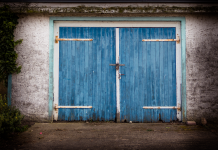Being ready for emergency situations can make a world of difference. To assist you in staying ahead of disasters, here are some key tips for assembling a survival kit and other crucial emergency preparedness measures.
A fundamental step in safeguarding your household is to create a detailed plan for various emergencies. Develop plans for sheltering in place during severe weather or natural disasters, as well as evacuation, fire, and other scenarios. These plans should outline individual responsibilities, reunification procedures, and designated meeting points.
Regularly conducting emergency drills is recommended so that everyone is familiar with their roles and the safest routes to safety. Make multiple copies of the disaster plan and emergency contact information for each household member, keeping them in wallets or backpacks. Update these plans as your household evolves or changes.
Once your plans are in place, it’s time to assemble supplies for a survival kit. While the contents may vary depending on the emergency type, every kit should include a first aid kit, flashlight with batteries, a signaling device (whistle, bell), and fully charged backup batteries or power banks for cell phones.
In addition to these essentials, ensure an ample supply of drinking water and shelf-stable food for each person. For shelter-in-place emergencies, have a gallon of water per person for each day planned. Consider water and food needs for pets as well.
Items to include in a “go-bag” or designated safe room are a manual can opener, eating utensils, cups, plates, childcare items, personal hygiene products, and specialty care items such as prescriptions and backup medical equipment. Check food expiration dates and the condition of batteries and supplies biannually.
Once confident in your plans and supply packing, consider additional security measures. An investment in an automatic home backup generator can be crucial in times of need, providing peace of mind during power outages. Signing up for alerts from the public safety warning system is another recommended measure.
Emergency preparedness requires careful planning. For more information on sheltering in place and comprehensive readiness for emergencies, please refer to the accompanying resource.
Infographic provided by Canter Power Systems, learn more about generator installation Houston




![CREATING A COZY SHE SHED [INFOGRAPHIC] Home Renovation blog](https://www.homedecoratingtrends.com/wp-content/uploads/2019/03/interior-3433005_1280-1-218x150.jpg)













